[ad_1]
 London Museum
London MuseumMaybe one of many oddest ethical panics – a concern that some evil threatens the wellbeing of society – was one which arose in medieval occasions.
Modern pointy-toed footwear referred to as poulaines have been alleged to advertise sexual deviancy and, as a ensuing sanction from God, have been blamed for bringing concerning the plague.
The lengthy factors have been stored erect by being filled with moss or straw and could possibly be made out of fancy ornamental materials or sturdier leather-based. There have been even armoured variations to be used in battle.
In a double whammy to the pious, the footwear have been seen as each demonic and useless and have been ultimately banned from London.
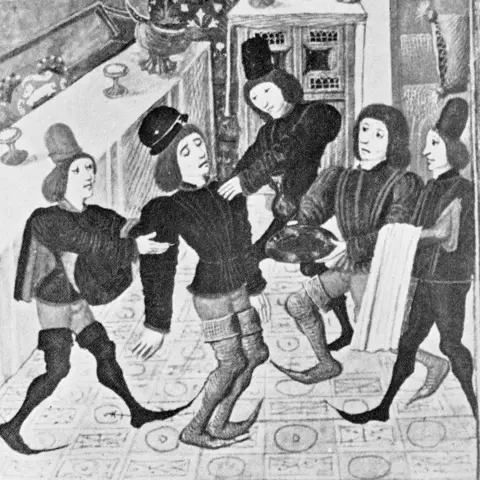 Getty Photos
Getty PhotosOne Benedictine monk turned so labored up concerning the problem he clearly devoted important thought and time to it.
In his historical past of the Church, written in about 1100, Orderic Vitalis railed in opposition to the gown of Norman lords, with explicit vitriol aimed toward long-toed footwear.
“A debauched fellow named Robert was the primary, concerning the time of William Rufus, who launched the follow of filling the lengthy factors of the footwear with tow (the fibre of flax, hemp or jute) and of turning them up like a ram’s horn.
“This absurd style was speedily adopted by a large number of the the Aristocracy as a proud distinction and signal of advantage.
“Our wanton youths are sunk in effeminacy.”
 Getty Photos
Getty PhotosHe additionally lambasted glove-wearing, centre partings and lengthy tunics – however the footwear appear to have been the true bee in his (manly) bonnet: “They insert their toes in issues like serpents’ tails which current to view the form of scorpions…
“They offer themselves as much as sodomitic filth”, with “lengthy luxurious locks like girls,” and “over-tight shirts and tunics” he noticed (barely lasciviously).
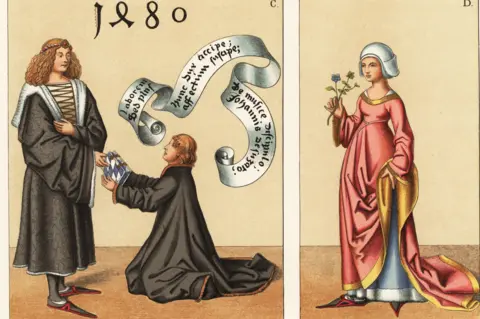 Getty Photos
Getty PhotosPoulaines, additionally referred to as cracows – after the Polish metropolis Krakow, the place they’re thought to have originated – have been pointed footwear worn predominantly by rich males.
The cumbersome footwear marketed the wearer’s leisure and emphasised their lack of ability to partake in bodily labour.
The London Museum has examples with toe factors longer than 10cm, whereas a monk at Evesham Abbey claimed in 1394 that he had seen individuals put on them “half a yard (45cm) in size”.
Thus, he alleged, “it was crucial for them to be tied to the shin with chains of silver” to allow strolling.
In 1348, the Black Demise arrived in London, a plague killing roughly 40,000 individuals – almost half of town’s inhabitants.
The church had given the reason for the pestilence to be the “impropriety of the behaviour of males” and poulaines symbolised that behaviour.
From talus to phallus
The lengthy level was seen as phallic, and the minimize across the ankle was saucily low, elongating the leg and displaying the talus bone, typically clad in vibrant hose to show the heads of admirers.
In line with the London Museum, younger males would “stand on road corners wiggling their footwear suggestively” at individuals strolling by.
If that shoe-wiggler had bells sewn to the ends of the factors, it indicated that the wearer was accessible for sexual frolics.
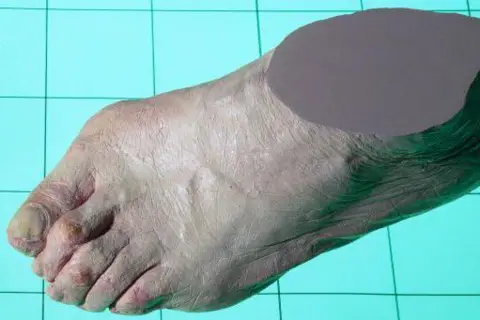 Getty Photos
Getty Photos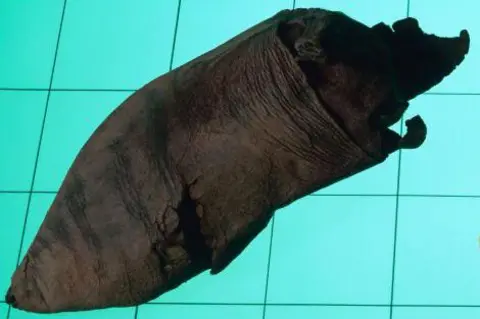 Getty Photos
Getty PhotosApart from the sinful affiliation of fleshly pleasures, clerics have been involved that the lengthy toe-pieces prevented individuals from kneeling within the accepted obeisant method.
This restriction of the flexibility to correctly pray led to non secular leaders calling them “Devil’s claws”, and in 1215 Pope Innocent III banned priests from sporting them – together with inexperienced or pink garments, ornamented buckles or undone cloaks.
In 1362 Pope City V tried to ban them fully – and in 1463 the UK Parliament below Edward IV handed a sumptuary legislation to cease anybody decrease in rank than lord to put on footwear longer than two inches within the factors.
Individuals discovered to be of too low a rank to have an especially lengthy level could possibly be fined, and “any cordwainer or cobbler throughout the metropolis of London or inside three miles of any a part of the identical metropolis” was banned from supplying or making them for individuals of inadequate the Aristocracy.
Fashions are, by nature, of a selected time – and by 1475 the development of the poulaine was largely over.
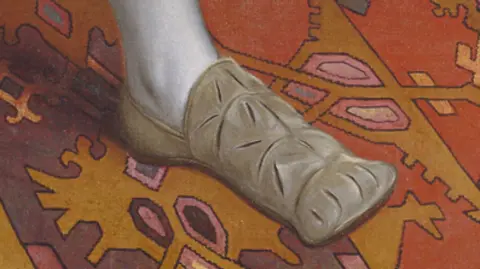 Getty Photos
Getty PhotosIn an entire change from the very pointed toe favoured on the finish of the fifteenth Century, Henry VIII favored a broad sq. shoe.
In line with the V&A Museum, the large footwear “echoed the road of trendy gown for males, who wore broad-shouldered padded doublets”.
And so European footwear pivoted into the large, box-toed footwear – and clearly, the general public responded by aping the regal type with a flourish.
The width turned exaggerated throughout Henry’s reign – with some soles being greater than 17cm (almost 7in) large.
Confronted with a brand new class of wealthy retailers with the wealth to purchase garments and footwear above their social standing, and at all times eager to maintain the hole between royalty and different courses, Henry up to date the sooner sumptuary legal guidelines in a 1509 act governing the sporting of pricey attire.
One of many attire acts restricted the width of those blocky footwear – solely males of standing have been allowed to put on footwear of sure width.
4 later revisions of the Acts of Attire continued to forestall the widespread individuals from emulating the courtroom.
The king is even mentioned to have had males who would go round attempting to catch individuals, measuring the width of their toes.
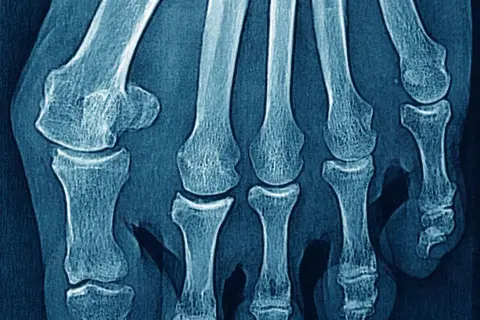 Getty Photos
Getty PhotosPoulaines have been, unsurprisingly, not nice for toes.
A research in 2005 of medieval stays discovered hallux valgus – a small deformity of the massive toe with a bony protrusion at its base, extra generally often called bunions – exclusively in corpses from the poulaine era.
And a 2021 research discovered that those that lived in additional trendy neighbourhoods throughout the top of the poulaine style have been way more prone to have bunions, misshapen toes, and bone fractures within the arms related to damage from falling.
It should have been a aid for the courtroom of Henry VIII, safe of their square-toed information that they would not journey over on their solution to be executed.
[ad_2]
[ad_1]
#pointy #footwear #created #ethical #panic #medieval #London
[ad_2]
, 2025-01-05 08:14:00





